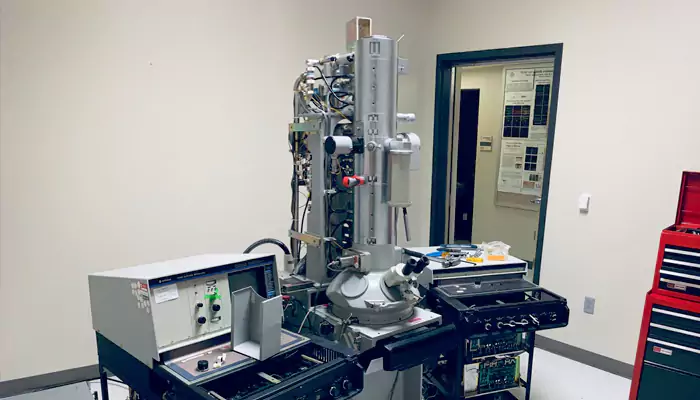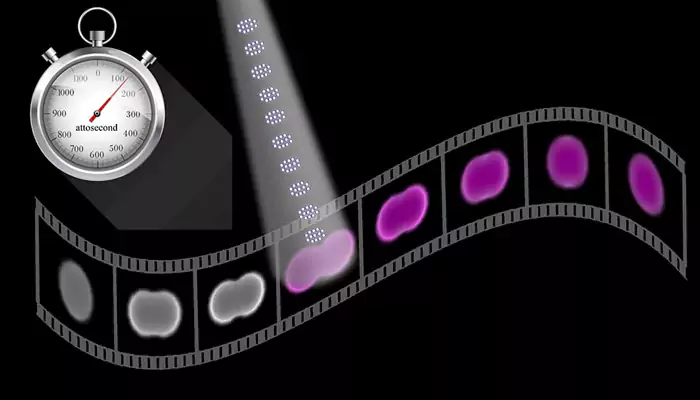Zoom in Like a Boss: World's Fastest Microscope is a Gamechanger; Check Key Features
- Soham Halder
- 1 year ago
- 3 minutes read

Ever imagined viewing moving electrons? That's possible right now!
Microscope is used to visualize the unseen. What if you get a chance to observe the smallest ones or electrons? Scientists have done something unthinkable. It's world's fastest microscope to observe literally everything! Let's find out key features of this new discovery.
How Traditional Scientific Microscopes Work?
Generally, a transmission electron microscope is used to magnify objects up to millions of times their actual size, which is impossible to visualise through traditional light microscope. A transmission microscope don't use normal visible light, rather it uses beams of electrons passing through the sample. The interaction between the passing electrons and the sample is later captured by lenses and precisely detected by a camera sensor to generate a detailed picture of the sample.

Credit - @BWJones X handle
Later on, Ultrafast electron microscopes were developed in the 2000's, which greatly enhanced the temporal resolution of the microscope. A temporal resolution is nothing but the ability of a microscope to measure as well as observe changes over time.
An Unimaginable Creation:
Scientists at the University of Arizona have developed the world's fastest electron microscope, capable of observing moving electrons.
"This transmission electron microscope is like a very powerful camera in the latest version of smart phones; it allows us to take pictures of things we were not able to see before – like electrons," lead-author Mohammed Hassan, an associate professor of physics and optical sciences at the University of Arizona, said in a statement. "With this microscope, we hope the scientific community can understand the quantum physics behind how an electron behaves and how an electron moves.”
Faster than Ever:
Let's understand how much powerful this new microscope is. An electron can travel around the world couple of times within few seconds. And, the newly developed microscope can literally take freeze-frame photographs of a moving electron.

Credit - @Prof_M_Hassan X handle
The new microscope, “a newer version of a transmission electron microscope, captures images of electrons in flight by hitting them with one- quintillionth-of-a-second electron pulses,” as mentioned in the research paper published recently.
"We are able to attain attosecond temporal resolution with our electron transmission microscope – and we coined it 'attomicroscopy,'" Hassan said.
Fast & Focused:
Basically, ultrafast microscopes don't rely on the speed of a camera's shutter to enhance the image quality. Rather, the resolution of the sample is determined by the “duration of electron pulses.”
Technically, the faster the pulse is passed on, the better the image is generated.
“Ultrafast electron microscopes previously operated by emitting a train of electron pulses at speeds of a few attoseconds. An attosecond is one quintillionth of a second. Pulses at these speeds create a series of images, like frames in a movie—but we were still missing the reactions and changes in an electron that takes place in between those frames as it evolves in real time,” lead scientist explained.
"Attosecond Optical Switching"
— Mohammed Th. Hassan (@Prof_M_Hassan) March 8, 2023
A short video that summarizes our recent work in @ScienceAdvances . The full article ==>https://t.co/ljOJ9hv7Ns
Thank you @MooreFound and @AFOSR pic.twitter.com/OCDGTAfxk4
Credit - @Prof_M_Hassan X handle
The electron pulses hit the "sample", slow down and later change the shape of the electron beam wavefront. This slowed beam is further magnified by a lens. This is followed by a fluorescent material glowing when the electron beam falls on it.
Now, scientists are hopeful to visualize more tiny particles and their peculiar behaviour to make brand new discoveries.












